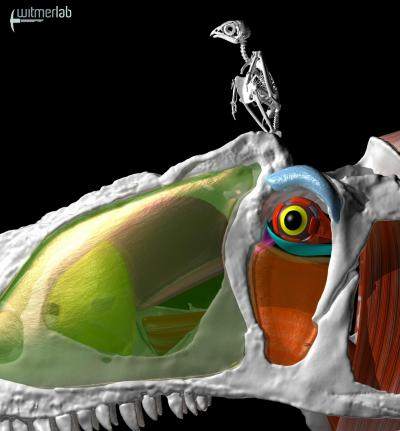The mighty T. rex may have thrashed its massive head from side to side to dismember prey, but a new study shows that its smaller cousin Allosaurus was a more dexterous hunter and tugged at prey more like a modern-day falcon.
“Apparently one size doesn’t fit all when it comes to dinosaur feeding styles,” said Ohio University paleontologist Eric Snively, lead author of the new study published today in Palaeontologia Electronica. “Many people think of Allosaurus as a smaller and earlier version of T. rex, but our engineering analyses show that they were very different predators.”

Snively led a diverse team of Ohio University researchers, including experts in mechanical engineering, computer visualization and dinosaur anatomy. They started with a high-resolution cast of the five-foot-long skull plus neck of the 150-million-year-old predatory theropod dinosaur Allosaurus, one of the best known dinosaurs. They CT-scanned the bones at O’Bleness Memorial Hospital in Athens, which produced digital data that the authors could manipulate in a computer.
Snively and mechanical engineer John Cotton applied a specialized engineering analysis borrowed from robotics called multibody dynamics. This allowed the scientists to run sophisticated simulations of the head and neck movements Allosaurus made when attacking prey, stripping flesh from a carcass or even just looking around.
“The engineering approach combines all the biological data—things like where the muscle forces attach and where the joints stop motion—into a single model. We can then simulate the physics and predict what Allosaurus was actually capable of doing,” said Cotton, an assistant professor in the Russ College of Engineering and Technology.






